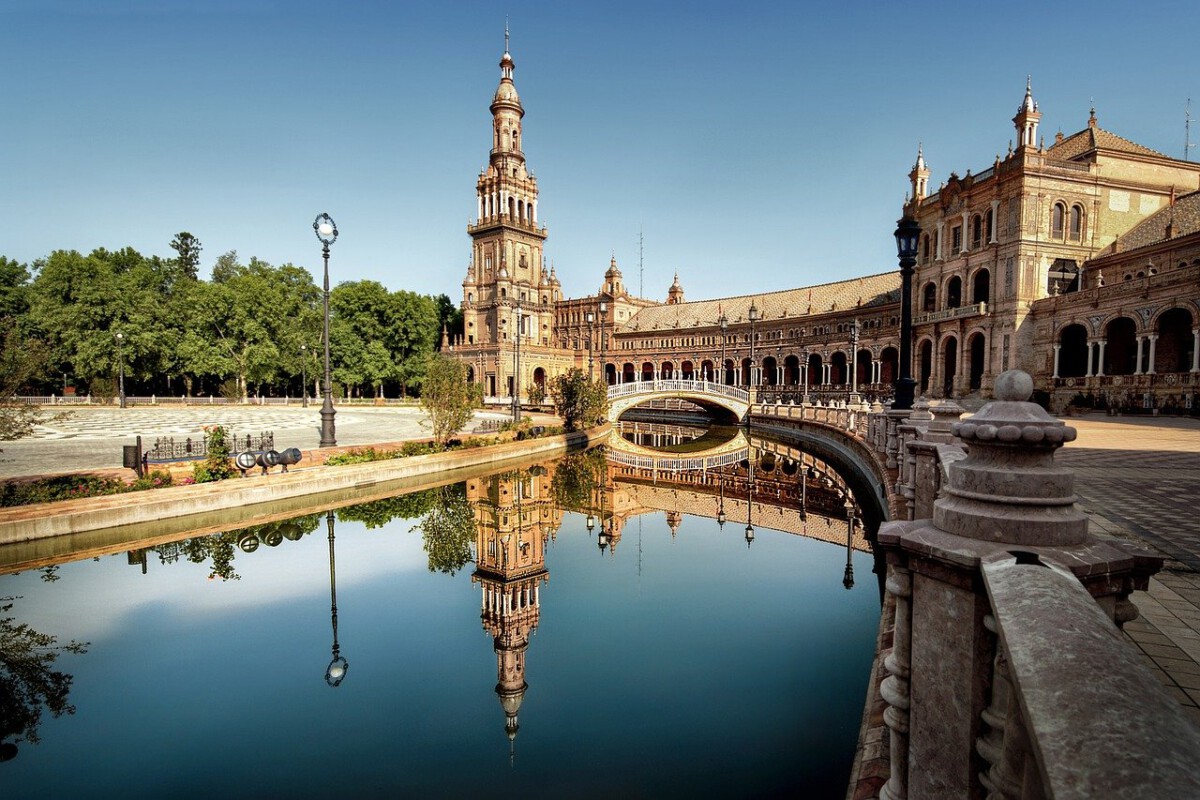The Impact of COVID-19 on Tourism Trends

For decades, Spain’s sun-soaked beaches and bustling cities drew record-breaking crowds, but everything changed with the COVID-19 pandemic. The sharp decline in visitors in 2020 sent shockwaves through the hospitality industry, leading to a period of reflection and reinvention. By 2023, Spain had welcomed about 70 million international tourists, signaling a strong recovery, but the lessons of the pandemic were clear: priorities needed to shift. Instead of chasing ever-higher numbers, the conversation turned toward sustainability and the quality of visitor experiences. Environmental experts and local leaders began pushing for balanced growth that protects both natural landscapes and historic sites. The pandemic also sparked a desire among travelers for less crowded, more meaningful destinations, prompting Spain to rethink what it means to be a world-class destination. The country is now actively adapting to these new traveler preferences, hoping to create a more resilient and thoughtful tourism sector.
Sustainable Tourism Initiatives

Sustainability is becoming the beating heart of Spain’s tourism transformation. The government rolled out the “Sustainable Tourism Plan,” which aims to slash carbon emissions by 30% before the decade is up. Hotels are receiving incentives to invest in solar panels, energy-efficient lighting, and water-saving devices, all in an effort to reduce their environmental impact. Tourists themselves are being encouraged to participate—rewards are offered for choosing eco-certified accommodations or participating in local clean-up days. The focus isn’t just on saving the planet; there’s a genuine effort to improve the quality of life for both visitors and residents. These changes are already visible, with more bike-friendly cities, cleaner beaches, and protected natural parks. Local businesses are also catching on, offering guided eco-tours and sustainable dining experiences. The hope is that these initiatives will set a new standard for responsible tourism in the Mediterranean.
Shifting Demographics of Travelers

The face of Spain’s tourists is changing, and it’s not just the sunburned retirees anymore. Millennials and Gen Z travelers are now at the forefront, driving demand for experiences that go far beyond the usual sightseeing. A recent survey found that 65% of younger visitors want trips that connect them to local communities and culture, rather than just ticking off famous landmarks. This shift is prompting tourism operators to offer immersive cooking classes, art workshops, and small-group adventures in rural areas. Social media is amplifying these trends, with viral videos and posts inspiring others to seek out “hidden gems.” Spain’s tourism board is responding by spotlighting lesser-known towns and authentic local festivals. The days of packaged tours are fading, replaced by a hunger for genuine, off-the-beaten-path experiences. This new generation of travelers is rewriting the rules, and Spain is embracing the change.
The Rise of Domestic Tourism

With international travel restrictions still fresh in memory, Spaniards have been rediscovering their own backyard. Domestic tourism surged by about 20% in 2023, as locals sought out new adventures close to home. Regions like Galicia, with its wild coastline, and Extremadura, known for its ancient Roman ruins and quiet charm, are enjoying newfound attention. Local governments are responding by improving infrastructure, from better roads to new cultural centers, making these areas even more attractive. Hotels and restaurants in previously overlooked towns are experiencing a revival, bringing much-needed jobs and energy back to rural communities. The trend isn’t just a temporary blip; many believe this renewed interest in local travel is here to stay. Families, couples, and solo travelers alike are finding joy in the diversity of Spain’s landscapes without ever needing to board a plane. The ripple effects are being felt across the country, as communities gain both pride and economic support from their fellow citizens.
Technology’s Role in Tourism Transformation

Innovation is sweeping across Spain’s tourism scene, making travel more seamless and engaging than ever before. Digital tools like mobile apps now guide visitors through historic neighborhoods, offering audio tours and real-time event updates. Virtual reality experiences let travelers preview museums or even “walk” the Camino de Santiago from their living room, sparking curiosity and trip planning. Contactless payments, once a novelty, have become the norm in restaurants, hotels, and attractions, offering convenience and peace of mind. Online booking platforms have grown more intuitive, allowing travelers to find last-minute deals and tailor their itineraries with ease. Tour operators are using social media to interact directly with customers, answer questions, and share behind-the-scenes stories. Technology is even supporting sustainability, with apps that recommend eco-friendly activities and help tourists track their carbon footprint. All these changes add up to a travel experience that feels personalized, safe, and connected to the digital age.
Cultural Preservation Efforts

As Spain welcomes millions each year, protecting its rich tapestry of traditions and history has become a top priority. Laws like the “Cultural Heritage Protection Act” are being enforced more strictly, ensuring that iconic sites—from the Alhambra to Gaudí’s Sagrada Família—are preserved for future generations. Local communities are actively involved in developing tourism experiences that highlight their customs, from flamenco dancing in Andalusia to traditional fishing festivals in the Basque Country. Tour guides receive training on how to educate visitors about respecting local etiquette and the significance of certain rituals. Special grants are funding the restoration of lesser-known landmarks, breathing new life into rural villages. Artisan markets and workshops are popping up, giving travelers the chance to learn crafts like pottery or embroidery straight from the experts. These efforts are not only safeguarding cultural treasures but also fostering pride and economic opportunity for locals.
Economic Considerations and Job Creation

Tourism remains a heavyweight in Spain’s economy, accounting for nearly 12% of the national GDP and supporting millions of jobs. But the focus is shifting away from quantity to quality, with the aim of creating stable, fulfilling employment. The government is investing in workforce training programs that emphasize customer service, language skills, and sustainable tourism practices. Hotels and tour companies are encouraged to provide year-round contracts instead of seasonal work, helping reduce economic instability for employees. There’s also a push to support local entrepreneurs, from family-run guesthouses to independent guides, so that more of the tourism revenue stays within communities. Efforts are being made to close the gender gap by promoting women in leadership roles within the sector. Economic diversification is also on the agenda, with regions investing in agritourism, wellness retreats, and cultural festivals to attract different types of visitors. The goal is a healthier, more resilient industry that benefits everyone involved.
The Role of International Partnerships

Spain is looking beyond its borders to shape the future of tourism, forging alliances with countries and organizations around the globe. By participating in international forums, Spain shares its successes in sustainable tourism and learns from the experiences of others. Collaborative projects are underway to protect shared natural resources, such as the Mediterranean coastline, and to develop cross-border travel routes. The United Nations World Tourism Organization, headquartered in Madrid, provides a channel for Spain to lead discussions on responsible travel. Partnerships with tech companies are helping Spanish destinations become “smart cities,” using data to manage visitor flows and improve services. Joint marketing campaigns are reaching new audiences, especially in emerging markets. These alliances are not just about boosting numbers—they’re about building a united front for a tourism industry that’s more ethical, sustainable, and adaptable.
Health and Safety Protocols

Health and safety have moved to the forefront of Spain’s tourism strategy, with strict protocols now standard across the country. Hotels, airports, and attractions are routinely sanitized, and staff receive regular health and hygiene training. Temperature checks and health screenings greet travelers upon arrival, while vaccination campaigns continue to ensure high levels of community protection. Signs remind visitors of social distancing and proper mask usage in busy areas, helping to maintain a sense of security. Many restaurants have introduced QR code menus to minimize contact, and museums limit capacity to prevent overcrowding. These measures are not just about compliance—they’re about rebuilding trust and confidence among travelers. Surveys show that visitors now list health and safety among their top concerns, and Spain’s proactive response is making a difference in attracting cautious tourists.
Future Outlook for Spanish Tourism

The road ahead for Spanish tourism is both exciting and demanding, as the industry juggles sustainability, innovation, and tradition. Travelers are becoming more discerning, seeking out destinations that align with their values and offer authentic, meaningful experiences. Spain’s focus on environmental responsibility, cultural preservation, and digital transformation is positioning it as a leader in the new era of travel. The government and private sector are working hand-in-hand to ensure that growth does not come at the expense of local communities or the environment. As these efforts take hold, Spain hopes to attract visitors who appreciate the country’s unique blend of history, culture, and natural beauty. The industry is poised for a future that’s not just about numbers, but about shared experiences and lasting memories.






